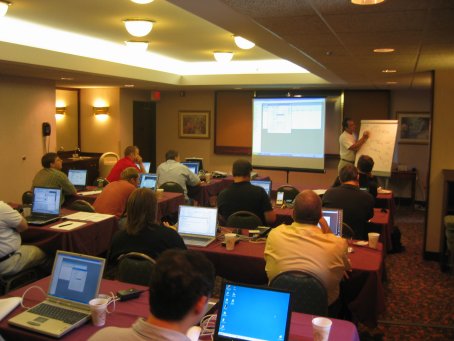Network setups with EoIP interfaces:
- Possibility to bridge LANs over the Internet
- Possibility to bridge LANs over encrypted tunnels
- Possibility to bridge LANs over 802.11b 'ad-hoc' wireless networks
An EoIP interface should be configured on two routers that have the possibility for an IP level connection. The EoIP tunnel may run over an IPIP tunnel, a PPTP 128bit encrypted tunnel, a PPPoE connection, or any connection that transports IP.
Specific Properties:
- Each EoIP tunnel interface can connect with one remote router which has a corresponding interface configured with the same 'Tunnel ID'.
- The EoIP interface appears as an Ethernet interface under the interface list.
- This interface supports all features of and Ethernet interface. IP addresses and other tunnels may be run over the interface.
- The EoIP protocol encapsulates Ethernet frames in GRE (IP protocol number 47) packets (just like PPTP) and sends them to the remote side of the EoIP tunnel.
- Maximal count of EoIP tunnels is 65536.
This is how to set up EoIP to bridge two (or more) Mikrotik routers for central PPPoE authentication
Using 2 routers called R1 and R2 that have an IP connection between them and R2 has 2 ethernet ports, i.e. you can ping rB from R1 and R1 from R2 where the R1 facing eth port is called eth1 and its other port is called eth2.
1. create a new EoIP tunnel on R1.
2. create a new EoIP tunnel on R2, where the tunnel ID is the same as the one on R1 but the MAC addreses are different.
4. create a new bridge on R1 and R2
3. add a PPPoE server to the Bridge on R1.
4. on R2 and add eth2 and the EoIP tunnel to the bridge.
5. put an IP address onto eth2 (any address seems to work, but it maybe better to use a different subnet for routing purposes).
Now you should be able to establish a PPPoE connection from a PC plugged into the eth2 port on router R2, this PPPoE connection will terminate on router R1.
This is not the most efficient method of using the available bandwidth on a network, but is perhaps easier than having a PPPoE A/C on every Mikrotik router and using RADIUS as you can just have PPP secrets setup on one router.
taken from http://wiki.mikrotik.com/wiki/EoIP










